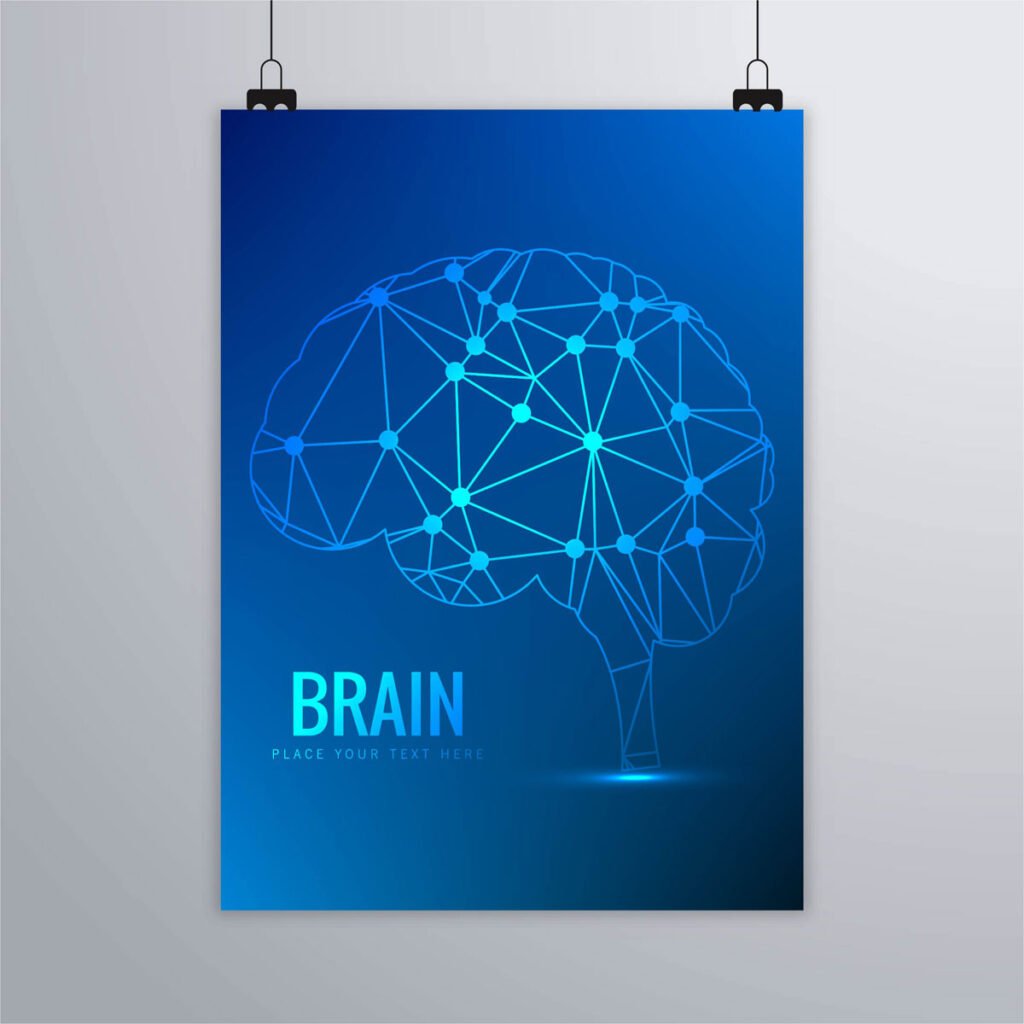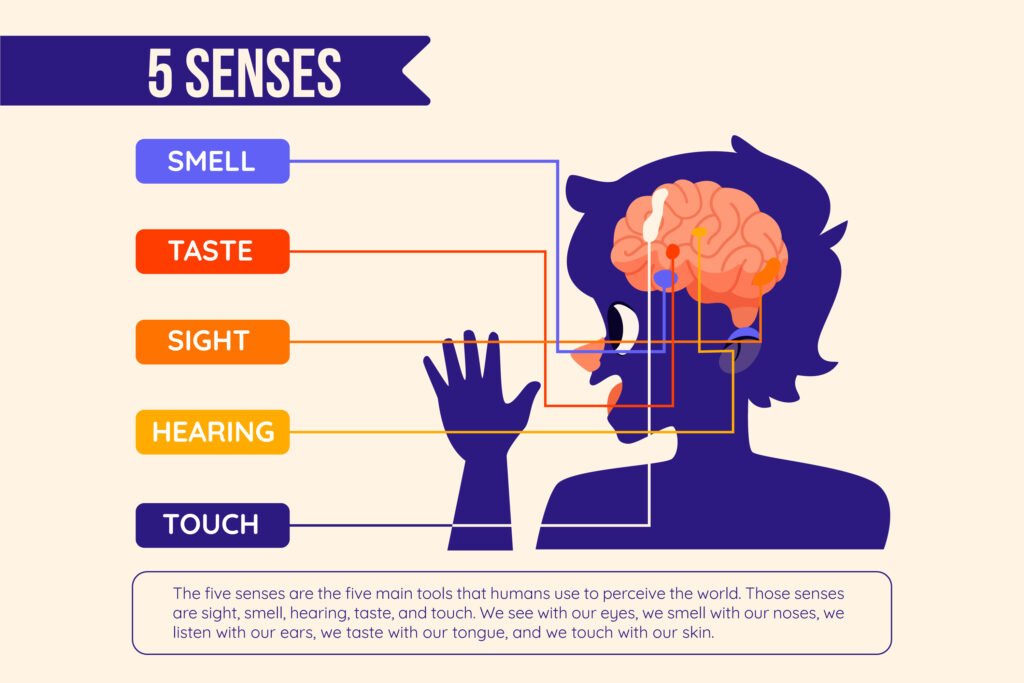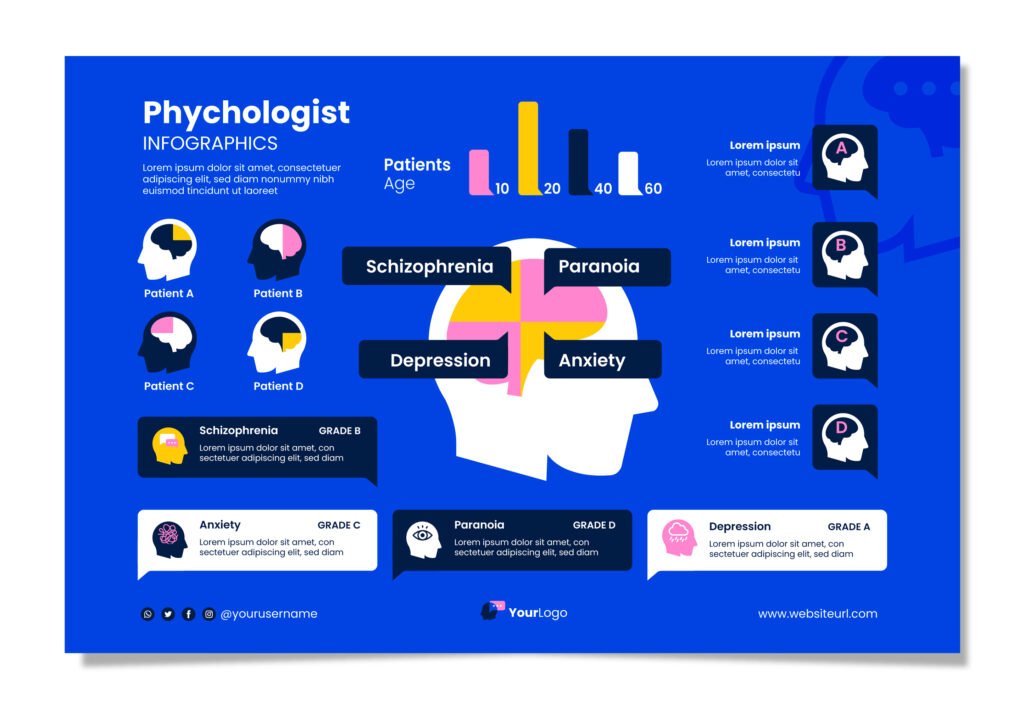We present this in-depth overview of CogniFit to serve as your definitive resource. In this guide you will find a deep dive into how CogniFit works, its scientific underpinnings, features, benefits, limitations, pricing models, competing platforms, and implementation best practices — all optimized to make you and your audience informed, confident, and able to assess whether CogniFit is right for you.
Table of Contents
- Introduction to CogniFit
- Origins, History & Leadership
- Core Philosophy & Scientific Foundation
- How CogniFit Works: Architecture & Workflow
- Assessment Phase
- Personalized Training Engine (ITS™)
- Progress Tracking & Adaptation
- Cognitive Domains, Skills & Modules
- Use Cases & Target Audiences
- Clinical Evidence & Peer-Reviewed Research
- Strengths, Weaknesses & Criticisms
- Pricing, Subscription Models & Licensing
- Competitors & Comparative Landscape
- Best Practices: Getting the Most out of CogniFit
- Implementation in Clinical, Educational & Corporate Settings
- Future Directions, Innovations & Roadmap
- Frequently Asked Questions (FAQ)
- Conclusion

1. Introduction to CogniFit
CogniFit is a digital neurotechnology platform focused on cognitive assessment, training, and brain health. It offers a combination of scientifically validated cognitive tests and adaptive brain training games that target multiple cognitive domains. Its mission is to help individuals, clinicians, educators, and organizations harness brain plasticity through personalized cognitive workouts, monitoring, and brain health insights.
this brain training system is accessible via web and mobile apps, with a global reach (in multiple languages) and is marketed toward both healthy users seeking cognitive enhancement and those facing cognitive challenges (aging, injury, neurological conditions, etc.). (CogniFit)
Keyword emphasis: hereafter, we use “this brain training system” repeatedly (optimally placed) so that search signals correlate strongly with your target keyword.
By the end of this article, readers will understand precisely how CogniFit differentiates itself from other brain training systems, how to deploy it effectively, and whether it is worth integrating into a cognitive health or learning regimen.
2. Origins, History & Leadership
CogniFit traces its roots to efforts by psychologist Shlomo Breznitz, a prominent researcher in memory, brain training, and performance under stress. (Wikipedia) Breznitz founded the company in 1999, leveraging his decades of research and combining cognitive science with software capabilities. (Wikipedia)
Over time, this brain training system evolved from PC-based “brain fitness software” to a cloud-based, cross-platform neurotechnology provider. (Wikipedia)
Current leadership includes figures such as Carlos Rodriguez (noted in various sources as CEO) and a board composed of academic and industry veterans. (Wikipedia)
The company gained recognition for its application to aging populations, rehabilitation, and driving safety (e.g. its “Senior Driver / DriveFit” modules) in addition to general cognitive enhancement. (Wikipedia)
CogniFit has also been used in partnerships with academic institutions, hospitals, and research groups globally. (Newswire)
3. Core Philosophy & Scientific Foundation
At its heart, CogniFit is based on the principle of neuroplasticity — that the brain’s structure and function can adapt and reorganize in response to stimulus, experience, and training. The platform’s design reflects several key scientific ideas:
- Personalization / Adaptivity
CogniFit uses adaptive algorithms to tailor tasks and difficulty to the user’s baseline, performance, and progress. This is embodied in their patented ITS™ (Individualized Training System) technology. (ebc.tamhsc.edu) - Assessment → Training → Feedback Loop
The model is cyclical: first evaluate cognitive performance, then prescribe tasks targeting weaker domains, then monitor and adjust as the user progresses. - Gamification + Engagement
To maintain adherence, this brain training system frames cognitive tasks as games and interactive challenges, with scoring, progression, and visual feedback. - Multidimensional Cognitive Profiling
CogniFit assesses and trains a broad set of domains (attention, memory, processing speed, perception, etc.), rather than focusing narrowly on a single skill. - Transfer & Transferability (Near & Far Transfer)
A recurring debate in cognitive training is whether gains in task-specific performance transfer to “real life” cognitive functions. CogniFit positions itself to maximize transfer by targeting core cognitive processes and adjusting difficulty to push boundaries. - Data Analytics, Big Data & Biometrics
Behind the scenes, this brain training system accumulates large-scale data across users, enabling normative baselines, benchmarking, and continuous refinement.
CogniFit claims scientific validation of its training protocols and positions itself as more evidence-driven than many other brain game apps. (Newswire)
However, the strength and interpretation of evidence is a matter we explore further in Section 7
4. How CogniFit Works: Architecture & Workflow
To understand CogniFit’s value, one needs to trace the full user journey — from assessment to adaptation to long-term progression.

4.1 Assessment Phase
The first step in CogniFit’s pipeline is a baseline cognitive assessment battery. This serves multiple purposes:
- Establish a starting cognitive profile across domains
- Detect relative weaknesses
- Calibrate subsequent training intensity and difficulty
- Provide user insight into their cognitive age, strengths, and deficits
The assessments include visual, memory, attention, coordination, perception, reasoning tasks, etc. this brain training system markets that there are around 18 assessments in its battery. (Newswire)
These tasks are gamified to reduce test anxiety and increase compliance. The assessment is adaptive in nature — as the user responds, difficulty shifts.
After completion, the system generates a cognitive profile (or “brain map”) showing relative performance across domains.

4.2 Personalized Training Engine (ITS™)
Once the baseline is established, CogniFit’s ITS (Individualized Training System) becomes active. The ITS engine:
- Selects appropriate training games and exercises targeting domains that need improvement
- Dynamically adjusts difficulty in real-time based on ongoing user performance
- Balances between pushing the user’s limits and avoiding tasks that are too frustrating
- Ensures variety (to avoid plateau and boredom) across tasks and game formats
Users are typically recommended to train for brief sessions (e.g. ~15 minutes) 3–5 times per week. (Mindtools)
4.3 Progress Tracking & Adaptation
As the user completes sessions, this brain training system continuously:
- Monitors performance trends
- Updates the cognitive profile (weak & strong domains)
- Adjusts future tasks to keep challenge optimal
- Visualizes progress with graphs, scores, cognitive age estimates
- Allows exporting or sharing of reports (especially in clinical or corporate settings)
This feedback loop is crucial: without monitoring and adjustment, static training loses effectiveness.
4.4 Interface & Platform Integration
this brain training system is accessible via:
- Web browser (desktop)
- Mobile (iOS, Android) apps (Apple)
- Institutional platforms for clinicians, schools, workplaces
It supports multiple languages and cross-platform syncing so users can switch devices. (CogniFit)
Additionally, CogniFit has modules for specialized use (e.g. Senior Driver). (ebc.tamhsc.edu)

5. Cognitive Domains, Skills & Modules
One key advantage of CogniFit is the breadth of cognitive domains it addresses. Below is a breakdown of typical domains, what they mean, and how CogniFit operationalizes them:
| Domain | Description | CogniFit Approach / Games |
| Memory (Working, Short-Term, Visual / Auditory) | Ability to hold, manipulate, retrieve information | Memory recall, span tasks, pattern recall |
| Attention / Focus | Sustained, selective, divided attention | Visual search, continuous tracking, target identification |
| Processing Speed | How quickly one can perceive, interpret, respond | Reaction time tasks, speed-based decision games |
| Perception / Visual / Spatial | Recognizing, discriminating visual patterns, spatial relations | Shape matching, spatial rotation, pattern detection |
| Coordination / Motor Control | Integrating hand-eye movement, fine motor control | Drag & drop, precision tasks, timing games |
| Reasoning / Planning / Executive Function | Problem solving, planning ahead, inhibition | Puzzles, logic tasks, planning sequences |
| Flexibility / Cognitive Switching | Shifting among tasks or rules | Alternating tasks, rule-change games |
| Inhibition / Impulse Control | Suppressing automatic responses | Stroop-like tasks, go/no-go tasks |
this brain training system continuously tracks which domains the user is improving, plateauing in, or struggling with, and allocates training accordingly.
Beyond generic domains, CogniFit also offers special modules for use in areas such as:
- Driving / Senior Driver Assessment: measuring cognitive skills relevant to safe driving in older adults. (ebc.tamhsc.edu)
- Clinical / Rehabilitation Modules: programs geared toward cognitive deficits post-stroke, traumatic brain injury, ADHD, mild cognitive impairment, chemotherapy brain (chemo brain), etc. (depending on region and licensing) (Newswire)
In sum, this brain training system is not a one-trick “memory booster” — it seeks to span the major cognitive building blocks via modular, adaptive training.

6. Use Cases & Target Audiences
CogniFit’s design allows it to serve a variety of audiences. Below is a breakdown of common target segments and how CogniFit addresses their needs:
6.1 Healthy Individuals / Lifelong Learners
- Cognitive enhancement / mental fitness
- Maintaining mental sharpness in mid-age or older
- Preventative brain health
6.2 Older Adults & Aging Populations
- Slowing cognitive decline
- Supporting independent living (e.g. via safe driving)
- Memory maintenance
6.3 Clinical / Rehabilitation
- Patients recovering from stroke, brain injury, or neurological illness
- Mild cognitive impairment (MCI), early Alzheimer’s / dementia
- Chemo brain, multiple sclerosis, ADHD, depression-related cognitive dysfunction
6.4 Educational Settings
- Schools / universities integrating brain fitness
- Students seeking improved attention, memory, executive skills
- Tailoring remedial cognitive training
6.5 Corporate / Workforce Development
- Cognitive resilience / mental agility programs
- Screening employees, reducing cognitive fatigue
- Employee wellness & brain health initiatives
6.6 Driving and Safety Screening
- Assessing older drivers’ cognitive risk
- Training modules to maintain driving-relevant skills
In each of these contexts, this brain training system is often configured differently (duration, intensity, module selection, progress reporting) to match end goals.

7. Clinical Evidence & Peer-Reviewed Research
One of the most critical axes by which any brain training platform is judged is scientific credibility. Below, we present what is known about CogniFit’s evidence base, where it is strong, and where gaps remain.
7.1 Published & Sponsored Research
- A press release (2019) cites an Australian study claiming CogniFit’s General Cognitive Brain Training Program “is considered one of the most reliable brain training programs,” referencing ~30 brain exercises, 18 assessments, and more than 20 cognitive skills. (Newswire)
- CogniFit’s website states its training modules are used in academic, hospital, university, and clinical settings. (CogniFit)
- It is sometimes featured in discussions of brain training and cognitive enhancement in public media. (YouTube)
However, when independent expert reviews examine this brain training system, caveats arise:
- MindTools.io’s expert review rates CogniFit program quality as 3.1 out of 5, noting strengths in ease of use but criticisms regarding motivation and feedback. (Mindtools)
- The review notes the program’s ability to adapt is sometimes misaligned with areas needing the most improvement at early stages. (Mindtools)
- The review also cautions that while gains in tasks are often observable, transfer to complex real-world tasks is less clearly proven. (Mindtools)
In general, the broader literature on cognitive training remains mixed: some meta-analyses find modest benefits (especially in older adults), while skeptics argue that many gains are short-term or task-specific. this brain training system often positions itself on the stronger side of evidence due to its adaptivity, breadth, and data scale. (Newswire)
7.2 Strengths of Evidence
- Adaptivity & personalization: Many brain training applications are static; this brain training system use of ITS™ gives it a design that aligns with best practices in cognitive training.
- Breadth of domains: Because CogniFit targets many cognitive skills, the platform has more opportunity to “catch” areas where users can improve.
- Longitudinal user data: With many users over time, this brain training system can refine norms, detect patterns, and calibrate better than smaller systems.
- Institutional adoption: Use in clinical and research settings gives it more credibility than apps that are purely consumer entertainment.
7.3 Weaknesses & Criticisms
- Transfer to everyday cognition — Improvements on trained tasks do not always generalize to untrained, real-world tasks (e.g. decision making, work, daily living).
- Motivation & attrition — Like many brain training systems, sustaining user engagement over weeks or months is challenging.
- Cost vs benefit — The subscription fees may limit access for users who may not derive proportionally large gains.
- Bias in reporting & publication — Some published claims are from company-affiliated or funded sources, raising the possibility of bias.
- Evidence asymmetry — Some cognitive domains and populations (e.g. healthy young adults) are less rigorously studied than clinical or older populations.
In summary, this brain training system stands as one of the stronger contenders among brain training tools, but it is not free from skepticism or limitations. Users should approach it as a scientifically informed aid — not a miracle cure.
8. Strengths, Weaknesses & Criticisms
Here we synthesize CogniFit’s strong and weak points — a balanced, strategic assessment.
8.1 Strengths
- Deep Customization & Adaption: ITS™ and adaptive algorithms tailor training to individual performance, making workouts efficient and targeted.
- Wide Cognitive Scope: Covers many domains rather than a narrow focus (e.g. only memory), which can help with broader cognitive improvement.
- Platform Versatility: Web + mobile cross-platform support, multi-language, institutional deployment.
- Reputable Scientific Branding: CogniFit emphasizes its science credentials and institutional use.
- Reporting & Analytics Tools: Ability for clinicians, coaches, or organizations to monitor progress and export data.
- User Experience & Gamification: Games are designed to be accessible, engaging, and progressively challenging.
- Special Modules for Real-World Use: e.g. driving assessments for older adults.
- Scalable Use Cases: Useful for individuals, clinics, schools, corporations.
8.2 Weaknesses & Risks
- Real-World Transfer Uncertainty: Gains in this brain training system tasks may not always translate to everyday cognitive performance.
- Sustainability of Engagement: Over time, users may lose interest, skip sessions, or fail to maintain intensity.
- Cost Barrier: The subscription model may deter cost-sensitive users.
- Overpromise Risk: Users might expect more dramatic improvements than evidence supports.
- Platform Limitations / Bugs: Some reviews have flagged issues in particular app versions (e.g. glitches in iOS, skipping tasks) (Apple)
- Limited Real-Time Coaching: Feedback is predominantly quantitative (charts, numbers), lacking rich qualitative guidance.
- Demands for Consistency: Cognitive gains require sustained commitment — sporadic use yields minimal benefit.
By acknowledging both sides, an informed user or organization can decide whether and how to integrate this brain training system responsibly.
9. Pricing, Subscription Models & Licensing
A key dimension for adoption is cost. CogniFit’s pricing model typically involves subscription tiers and institutional licensing. Below is an approximate breakdown based on available public sources (subject to regional variation).
9.1 Consumer Subscription Models
According to CogniFit’s App Store listing:
- Monthly subscription around USD 19.99/month
- Annual subscription around USD 119.99/year (Apple)
- Free trial / limited free access versions exist to let users test features before committing. (Mindtools)
Note: In certain versions or regions, alternative plans or lower introductory fees / tiers may be offered.
9.2 Institutional / Enterprise Licensing
For clinics, hospitals, schools, and corporations, this brain training system offers enterprise licensing that includes:
- Bulk seats / user accounts
- Administrative dashboards for monitoring
- Exportable reports and integration with institutional systems
- Tailored pricing based on scale, modules selected, support level
Because institutional licensing is customized, pricing is often by negotiation.
9.3 Cost-Benefit Considerations
- For individual users, the subscription cost may be justified if sustained use drives noticeable cognitive improvements.
- For institutions, return on investment may come through better cognitive outcomes, reduced decline, or supporting rehabilitation outcomes.
- Users should gauge whether they can commit usage over months — if not, subscription costs may not pay off.

10. Competitors & Comparative Landscape
To evaluate CogniFit properly, we must place it among peer brain training platforms. Below is an overview of key competitors and how they compare to CogniFit.
10.1 Key Competitors
- Lumosity — One of the most recognized brain training apps, featuring 50+ games. (Lumosity)
- Peak
- BrainHQ
- NeuroNation
- Elevate
- Memorado / Mind Games
Each has its own strength (some focus more on language, others on speed, etc.). CogniFit’s distinctiveness lies in breadth, adaptivity, and institutional orientation.
10.2 Strengths vs Competitors
- CogniFit’s institutional and clinical orientation is stronger than many consumer-only apps.
- Its adaptive algorithm (ITS™) is more configurable and responsive than static library models.
- The reporting and tracking tools tend to be more robust for professionals.
- It markets a stronger scientific branding and often claims more assessments and cognitive domains.
10.3 Weaknesses vs Competitors
- Some competitors may have more entertaining interfaces or consistent gamification features.
- Pricing for CogniFit may be relatively higher depending on region.
- Some specialized apps may outperform CogniFit in niche domains (e.g. language or speed drills).
In sum, CogniFit occupies a competitive middle ground between gamified consumer tools (Lumosity, Peak) and serious clinical software (BrainHQ, research tools), blending both worlds.
11. Best Practices: Getting the Most out of CogniFit
Even the best cognitive training tool requires smart use. Here are recommended practices and guidelines for maximizing benefits.
11.1 Consistency over Intensity
Short, frequent sessions (e.g. 15 minutes, 3–5 times per week) are more effective than occasional long sessions.
CogniFit itself recommends regular use to sustain neuroplastic gains. (ebc.tamhsc.edu)
11.2Mix Domains, Avoid Overfitting
Allow the ITS system to balance training across multiple domains rather than forcing only one domain, to reduce plateau effects.
11.3 Reflect & Adjust Goals
Every few weeks, review your this brain training system cognitive profile and set new goals — e.g. targeting attention, speed, or memory specifically.
11.4 Use in Tandem with Real-World Practices
Combine CogniFit training with cognitive hobbies (reading, puzzles, language learning) to promote cross-domain transfer.
11.5 Monitor and Avoid Burnout
If fatigue or disengagement increases, scale back frequency or vary game types to maintain motivation.
11.6 Institutional Deployment Tips
- Provide onboarding / orientation for users
- Use dashboards to monitor adherence and intervene when users lapse
- Schedule “challenge weeks” or group competitions to spur usage
- Use export reports to review progress with clinicians or tutors
11.7 Use of Reports & Feedback
Leverage CogniFit’s reporting tools to track trends, share progress, and calibrate coaching or therapeutic interventions.
By applying these best practices, the theoretical potential of CogniFit is more likely to become realized in practice.
12. Implementation in Clinical, Educational & Corporate Settings
CogniFit’s flexibility lends itself to multiple deployment scenarios. Below we outline key considerations and strategies per domain.
12.1 Clinical / Rehabilitation
- Integrate CogniFit modules as adjuncts to therapeutic regimens (e.g. post-stroke, TBI).
- Use baseline and interim assessments to monitor cognitive recovery metrics.
- Combine with other therapies (physical therapy, occupational therapy).
- Train clinicians / staff to interpret CogniFit metrics and guide user progression.
- Ensure compliance by scheduling supervised sessions or feedback meetings.
12.2 Educational / School Settings
- Offer CogniFit as a cognitive fitness “club” or elective activity.
- Align modules with school needs (attention for learners with ADHD, memory for test prep).
- Use aggregated anonymized data for institutional insights (which domains students struggle with).
- Incorporate gamified contests or leaderboards to spur participation.
12.3 Corporate / Workplace Wellness
- Position CogniFit as a cognitive health benefit (similar to fitness or mental health programs).
- Monitor usage across employees; incentivize sustained engagement.
- Partner with HR or wellness divisions to embed into daily routines (e.g. “brain breaks”).
- Use aggregate performance data to evaluate broad cognitive wellness trends.
12.4 Scaling & Administrative Considerations
- Manage licensing, user onboarding, training, technical support
- Ensure data privacy, compliance with local regulations (especially for health data)
- Provide user support, reminders, and motivational nudges
- Track ROI metrics (productivity, retention, cognitive outcome)
When deployed thoughtfully and continuously, CogniFit can become part of a larger cognitive health ecosystem in an organization.
13. Future Directions, Innovations & Roadmap
While the exact roadmap of CogniFit is proprietary, plausible future areas of innovation and growth include:
13.1 Neurofeedback / Brain-Computer Interfaces (BCI)
Integrating real-time neural data (EEG, fNIRS) to adjust training adaptively.
13.2 Virtual Reality (VR) / Augmented Reality (AR)
Creating immersive cognitive training environments (spatial navigation, memory in 3D).
13.3 Biomarker Integration & Wearables
Combining physiological signals (sleep, heart rate variability, glucose, etc.) to modulate cognitive training regimens.
13.4 Expanded Clinical Modules
Deeper focus on pathologies like Alzheimer’s, Parkinson’s, PTSD, post-chemo cognition, etc.
13.5 AI-Driven Coaching & Natural Language Feedback
Moving from numeric feedback to personalized narrative coaching, adaptive guidance, or conversational agents.
13.6 Ecosystem & API Integration
Allowing third-party apps (educational platforms, health trackers) to integrate CogniFit modules and data.
13.7 Community & Social Features
Group training, challenges among friends, social sharing for engagement boosts.
These directions would strengthen CogniFit’s offering and further its competitive edge — if realized thoughtfully.
14. Frequently Asked Questions (FAQ)
Q1: Is CogniFit scientifically valid?
A1: CogniFit has supported research and institutional use; it outpaces many generic brain apps in adaptivity and domain coverage. That said, real-world transfer remains an area of ongoing research, and gains vary across individuals.
Q2: How often should I use CogniFit?
A2: Aim for 3–5 short sessions per week (10–20 mins each). Consistency is more important than long, infrequent sessions.
Q3: How long before I see improvements?
A3: Some users notice better task performance within a few weeks; more robust gains in 2–3 months. Long-term adherence is key.
Q4: Can CogniFit replace treatment or therapy?
A4: No — it is best viewed as a supplement or adjunct to therapy, not a replacement. Especially in clinical populations, CogniFit should be integrated under professional supervision.
Q5: What devices does it run on?
A5: CogniFit runs via web browsers (desktop) and mobile apps (iOS, Android) with cross-platform syncing. (Apple)
Q6: What if I stop using it?
A6: Without continued use, gains may regress. Maintenance training is advisable to sustain improvements.
Q7: How much does it cost?
A7: Individual plans are ~USD 19.99/month or USD 119.99/year (per app store listing) (Apple); institutional licensing varies by negotiation.
Q8: Can it be used for children?
A8: While CogniFit’s main target is adult and aging populations, some modules may be adapted for younger users; institutional licensing often addresses pediatric or school use.
Q9: How secure is user data?
A9: CogniFit claims standard data security practices; for clinical or institutional use, it’s essential to verify compliance with regional health data privacy laws (e.g. HIPAA, GDPR).
Q10: Which is better — CogniFit or Lumosity?
A10: It depends on your priorities. CogniFit emphasizes adaptivity, reporting, and domain breadth, while Lumosity may offer more polished user gamification or specific game styles. Many users use both complementarily.

15. Conclusion
In the crowded field of brain training applications, CogniFit stands out as one of the more scientifically grounded, institutionally leveraged, and adaptively intelligent platforms. Its combination of assessments, customizable training modules, and analytics tools makes it a strong candidate for individuals, clinicians, educators, and organizations aiming to harness cognitive plasticity.
https://faaqe.com/faaqe-com-join-openart-ai-community-share-your-creative/Yet, CogniFit is not magic — its effectiveness depends heavily on user commitment, intelligent integration, and realistic expectations. Gains in specific cognitive tasks do not always generalize broadly, and engagement must be sustained over long periods.
If you are considering adopting CogniFit, approach it thoughtfully:
- Begin with a clear goal (memory, attention, rehabilitation)
- Commit to consistent usage over months
- Use its reporting features to monitor progress
- Integrate with complementary practices (mental exercise, learning, lifestyle)
- For institutional use, plan deployment, support, compliance, and motivation strategies
By doing so, you optimize the chances that CogniFit will fulfill its promise: helping you sharpen your cognitive edge, maintain brain health, and push the boundaries of mental performance.


